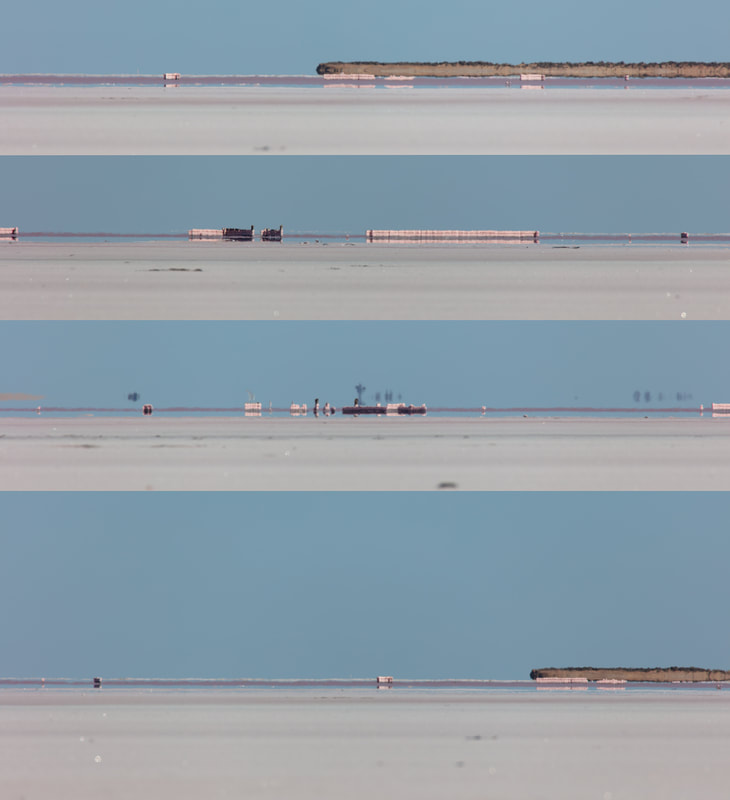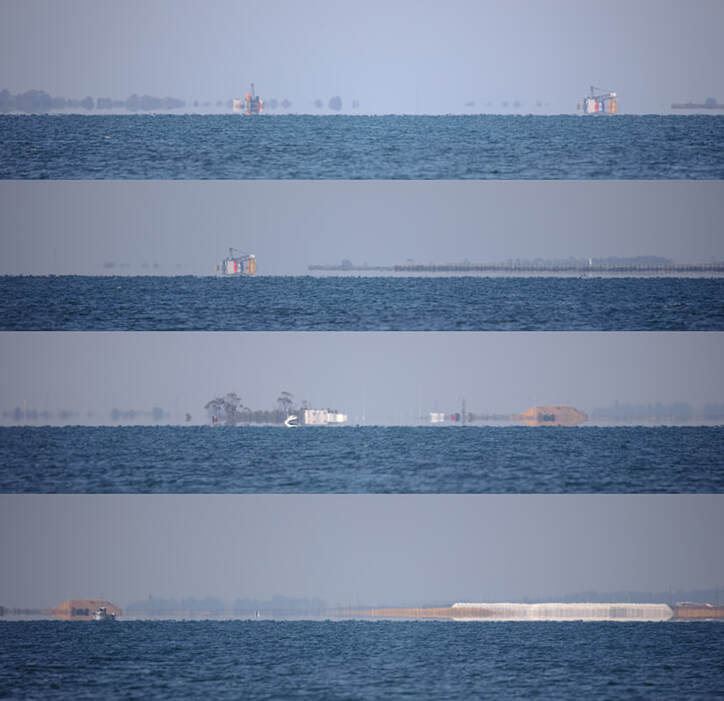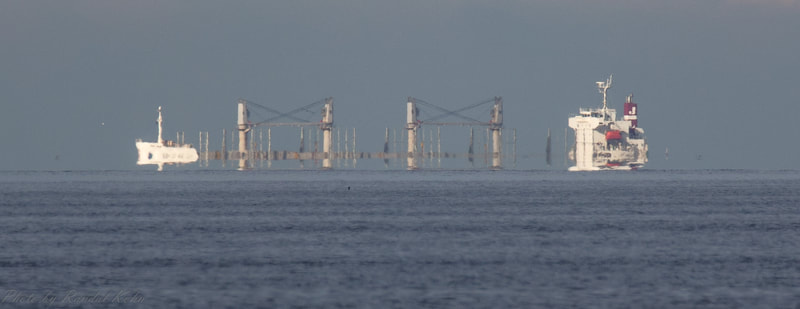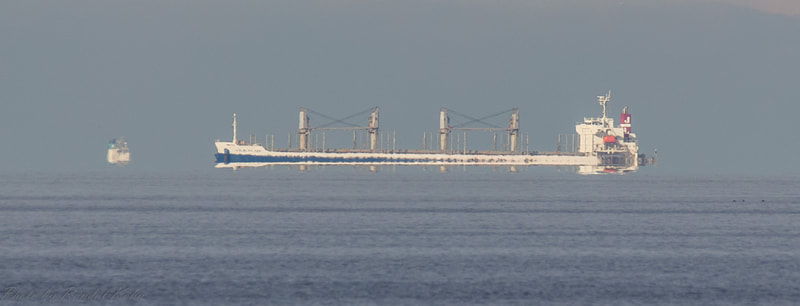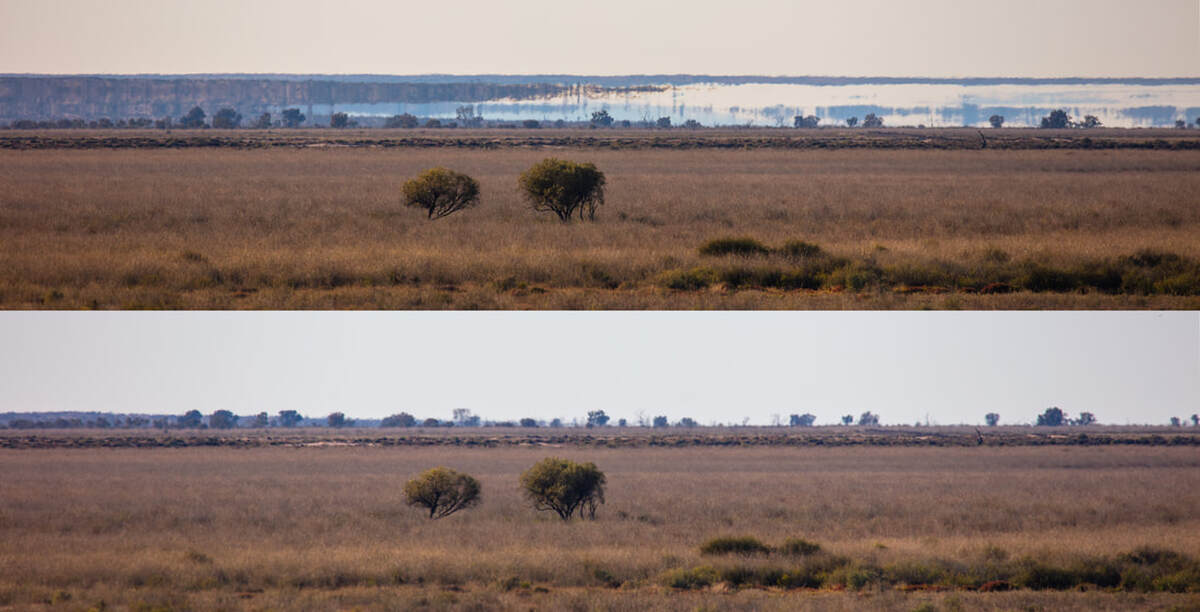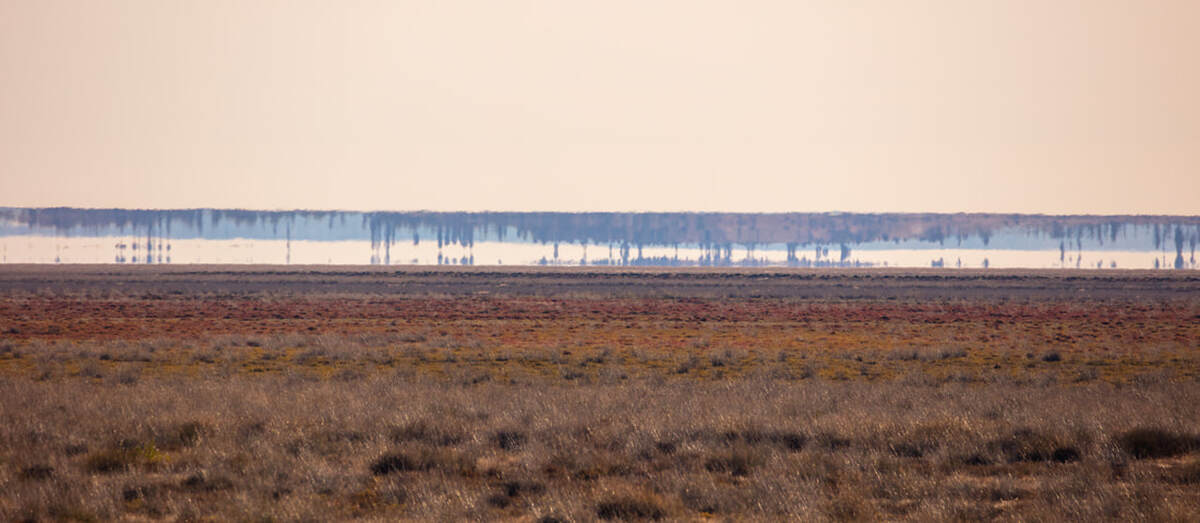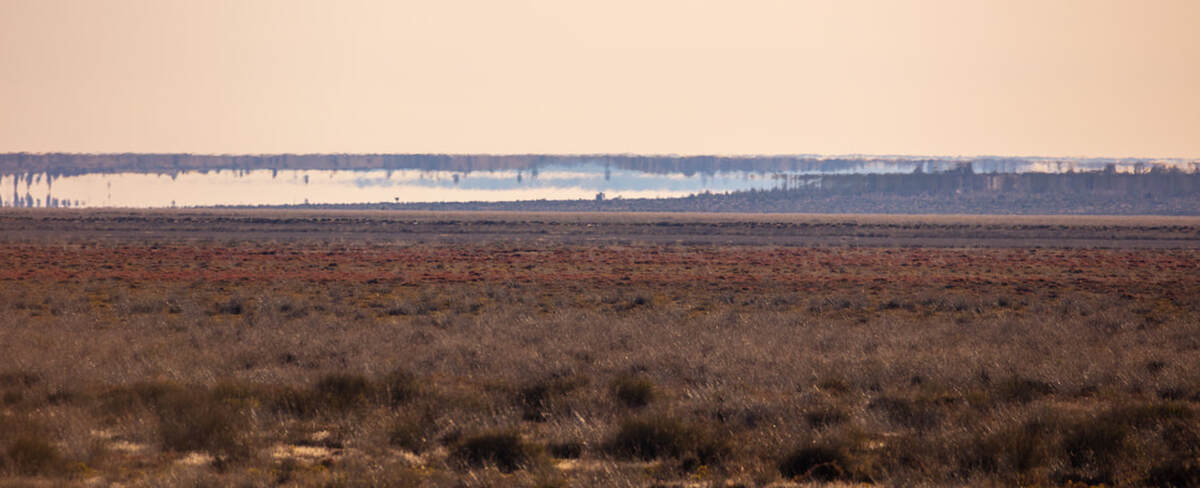My interest in nature extends to observing the behavior of light itself. After all, light is what both a camera and our vision see. In another gallery I look at light reflections on water, but here I look at the effect air density and long distances have on light. The variations in air density between you and the object you observe will cause distorted or transposed images; the effects of refraction. This leads to some interesting Mirages, which can get fairly optically complicated. There's a bit more information following.
Broadly defining Mirages; there are superior and inferior Mirages. This refers to the Latin meaning of 'above' or 'under'. Most of the Mirages we see are inferior types. These occur when light from the sky is refracted so it looks like its coming from the ground, quite often the horizon is inverted so it looks like a reflection, but its actually refraction. Superior Mirages that occur above the horizon are normally associated with cool still air that has sunk to the bottom. Light traveling from a distant object that would normally pass over your head is refracted down so the object might appear right way up floating above the horizon.
A third category of mirage is called Fata Morgana. This kind of complex imagery is generated by layers of different air densities sitting on top of each other that are, as you would expect, curved around the Earths surface. A Fata Morgana might reveal objects that are over the horizon.
The three photos below demonstrate this effect. The distant dune and vegetation were over the horizon and not seen during the day. However for a brief period of about 15 minutes in the early morning they were projected upside down above the horizon. The projection angles of Mirages are always very shallow so the effect is never far from the horizon which in this case of Fata Morgana was around 13km. You need a pair of binoculars or a 600mm telephoto lens to see it properly. No image shot through 13km of air will be sharp. That's because air is never still. Any heat held in it will cause a shimmy and dance, thus breaking up the image. This is what we see in the shed frame on a very hot day.
This is a good site that delves into the optical science of Mirages. It's not hyperlinked so copy and paste it. https://aty.sdsu.edu/mirages/mirintro.html
A third category of mirage is called Fata Morgana. This kind of complex imagery is generated by layers of different air densities sitting on top of each other that are, as you would expect, curved around the Earths surface. A Fata Morgana might reveal objects that are over the horizon.
The three photos below demonstrate this effect. The distant dune and vegetation were over the horizon and not seen during the day. However for a brief period of about 15 minutes in the early morning they were projected upside down above the horizon. The projection angles of Mirages are always very shallow so the effect is never far from the horizon which in this case of Fata Morgana was around 13km. You need a pair of binoculars or a 600mm telephoto lens to see it properly. No image shot through 13km of air will be sharp. That's because air is never still. Any heat held in it will cause a shimmy and dance, thus breaking up the image. This is what we see in the shed frame on a very hot day.
This is a good site that delves into the optical science of Mirages. It's not hyperlinked so copy and paste it. https://aty.sdsu.edu/mirages/mirintro.html
Above: two photographs of the same horizon. The upper one has a Fata Morgana in progress.
Above: this horizon was completely flat and featureless during the day. The inverted dune image is refracted from over the horizon.
Above: the Fata Morgana intersects with a normally visible dune. The cold air layers distort its summit.
Above: heat haze near Kerang Victoria, breaks up the light from a shed frame. Note the effect is strongest near the ground where the air is hottest.
Header image: outback road NSW with very active heat haze and Mirage
